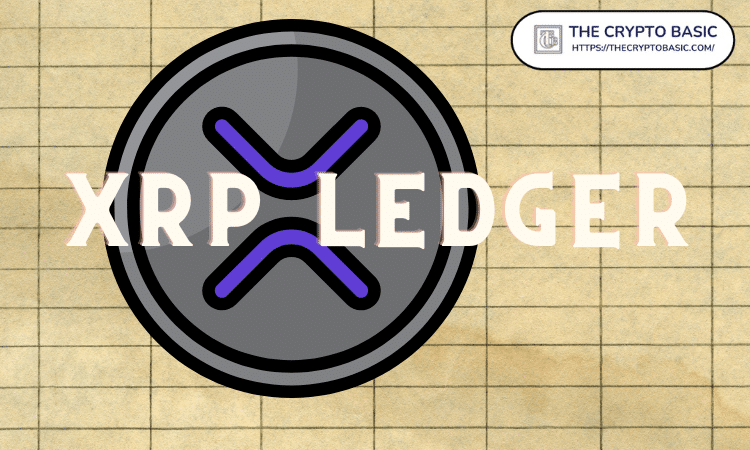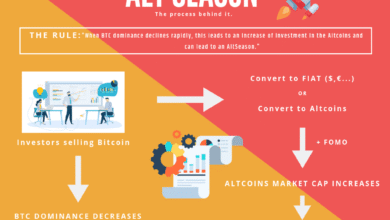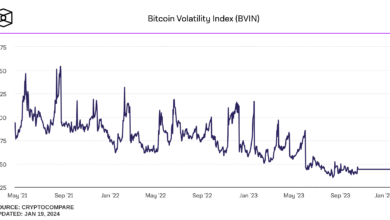XRP Ledger: A Key Component of Financial Infrastructure

The XRP Ledger (XRPL) has established itself as a cornerstone of modern financial infrastructure, thanks to its unique blend of speed, scalability, and security. As Ripple’s chief technology officer, David Schwartz, points out, the XRPL has been operating effectively for over a decade, setting a standard for blockchain adoption in the realm of stablecoins and payment solutions. This ongoing innovation is a testament to its ability to meet the evolving demands of the financial sector and demonstrates its potential to facilitate low-cost transactions without the friction typically associated with cryptocurrencies. By providing a permissionless environment, the XRP Ledger empowers participants across various jurisdictions to engage in seamless transfers, underscoring its vital role in enhancing global financial systems. Through its advanced architecture and commitment to compliance, XRPL not only supports the growth of digital assets but also positions itself as a leader in the transformation of financial services.
The XRPL, also known for its robustness and adaptability, serves as a critical framework for institutions seeking to leverage blockchain technology. Under the guidance of industry experts like David Schwartz at Ripple, this decentralized ledger facilitates efficient asset transfers and financial transactions, positioning itself at the forefront of blockchain development. Its unique characteristics support the growing trend of digital currencies while ensuring compliance and accessibility, vital in today’s financial landscape. By embracing these innovations, the XRP Ledger embodies the principles of transparency and security that underpin modern payment systems, all while aspiring to enhance liquidity and programmability for diverse institutional needs. This evolving technology paves the way for a new era in financial infrastructure, where seamless transactions and regulatory cooperation become the norm.
The Importance of Blockchain in Financial Infrastructure
In recent years, the recognition of blockchain technology as a cornerstone of modern financial infrastructure has gained immense traction. Companies across the globe are increasingly adopting blockchains to enhance their payment systems and improve operational efficiency. This shift reflects an understanding that decentralized systems can better accommodate the evolving demands of the financial landscape. Ripple’s chief technology officer, David Schwartz, has pointed to this trend, highlighting that both stablecoin issuers and payment companies are creating their own networks to optimize transactions and ensure greater compliance in regulated markets.
The growing reliance on blockchain networks is indicative of the broader acceptance of decentralized finance (DeFi). By allowing participants to operate without intermediaries, blockchain technology empowers users to engage in transactions with confidence and security. Schwartz emphasizes that the blockchain infrastructure supports a permissionless environment while balancing necessary regulatory compliance—a feature epitomized in the design of the XRP Ledger. This duality positions blockchain as a fundamental component in shaping the future of global financial systems.
XRP Ledger: A Model of Stability and Performance
The XRP Ledger stands out as a hallmark of successful blockchain implementation, having operated effectively for over a decade. Its endurance stems from rigorous testing and continual enhancements that have allowed it to adapt to the changing financial landscape. According to David Schwartz, the XRPL has achieved significant institutional adoption due to its proven track record of reliability and efficiency. The ledger’s unique attributes, such as its ability to facilitate counterparty-free transactions, make it an attractive option for businesses looking to innovate their payment solutions.
In promoting the XRP Ledger, Schwartz reflects on its dual nature as both public and permissionless, which enhances its openness to global participation. This characteristic significantly contrasts with blockchains reliant on centralized validator sets, risking scalability issues. The XRPL’s architecture thus serves a vital role in establishing a resilient financial infrastructure that can manage diverse assets efficiently and affordably. Coupled with the real utility of XRP as a bridge asset, the XRPL is well-positioned to support the burgeoning ecosystem of digital currencies and assets.
The features of the XRP Ledger also promote lower transaction costs and seamless interoperability, which are critical for fostering blockchain adoption. For institutions, utilizing the XRPL can reduce friction associated with traditional payment processes, ultimately driving down costs. As more players in the financial space recognize the advantages of using a proven blockchain platform like the XRPL, it is likely that we will see enhanced collaboration across different sectors, paving the way for broader acceptance of blockchain technology.
Ripple and the Future of Blockchain Payments
Ripple has consistently advocated for the integration of blockchain technology into payment systems, and with the continued evolution of the XRP Ledger, the company is poised to lead in shaping the future of digital transactions. David Schwartz has noted that emerging trends in stablecoins and cross-border payments are urging financial institutions to explore innovative solutions, making Ripple’s offerings increasingly relevant. As the financial landscape grows, the XRPL can provide the flexibility and speed needed to keep pace with changing market dynamics.
Furthermore, Ripple’s commitment to enhancing the XRPL’s programmability and compliance-grade capabilities indicates a focused strategy for enabling institutional engagements. These developments signify a step toward addressing the specific needs of regulated entities within the financial sector, further fostering trust and confidence in blockchain solutions. As more companies recognize the potential of using XRP and XRPL, the path is paved for heightened blockchain adoption, ultimately transforming how businesses transact across borders.
The Role of Stablecoins in Blockchain Adoption
Stablecoins have emerged as critical components of the cryptocurrency ecosystem, bridging the gap between traditional fiat currencies and digital assets. They typically maintain their value against a reserve of assets, thereby providing a reliable medium for transaction purposes. According to David Schwartz, the rise of stablecoin projects reflects a growing consensus around the necessity of integrating blockchain into core financial infrastructure. As companies seek to enhance payment systems, the demand for stablecoins is likely to increase alongside the adoption of blockchain technology.
Incorporating stablecoins into the XRPL ecosystem not only enhances transaction fluidity but also reinforces the ledger’s appeal to institutions wary of volatility. As stablecoins mature and become more widely accepted, they can serve as a reliable on-ramp for users transitioning into the broader crypto space. This alignment between stablecoins and the XRPL underscores a critical intersection of innovation and user security, providing businesses with the tools necessary to engage confidently in blockchain transactions.
David Schwartz’s Vision for Blockchain Innovation
David Schwartz, as Ripple’s chief technology officer, has been an influential voice in the ongoing dialogue about blockchain’s role in global finance. His insights into the architecture of the XRP Ledger underline the importance of developing a technically sound and operationally robust blockchain framework. Schwartz’s vision for the XRPL encompasses not only the immediate needs of current users but also anticipates future demands from businesses seeking advanced functionality and compliance capabilities.
With a focus on enhancing features like programmability and deep liquidity, Schwartz emphasizes the necessity for blockchain solutions to evolve continuously. His commitment to improving XRPL’s capabilities points to a broader trend in the industry where innovation is paramount. By fostering an environment that encourages experimentation and adaptation, Schwartz sets the stage for Ripple to lead the charge in revolutionizing financial systems through blockchain technology.
Enhancing Compliance in Blockchain Transactions
As regulatory scrutiny of cryptocurrencies intensifies, the need for compliance in blockchain transactions becomes increasingly vital. Schwartz highlights that the XRP Ledger incorporates features that make it easier for businesses to comply with existing regulations while enjoying the benefits of a decentralized system. This aspect is particularly crucial for institutions that seek to operate within legal frameworks while leveraging blockchain technology for efficiency and cost-effectiveness.
By designing the XRPL as a hybrid model, Schwartz ensures that it remains accessible to a wide audience while providing mechanisms for regulatory compliance. These strategic decisions help to address potential barriers that could impede broader blockchain adoption. Consequently, the enhancements aimed at compliance not only support the functioning of the XRPL but also advocate for a more synchronized approach between traditional financial systems and emerging blockchain solutions.
The Potential of XRP as a Bridge Asset
Ripple’s XRP is often referred to as a bridge asset due to its unique role in facilitating exchanges between different currencies and digital assets. According to David Schwartz, the functional utility of XRP allows for seamless transactions and minimizes instances of counterparty risk, making it a favorable choice for businesses involved in cross-border payments. By streamlining the conversion process and taking advantage of the XRPL’s efficiency, XRP can significantly reduce costs and transaction times for businesses.
Moreover, the inherent liquidity provided by XRP enhances the attractiveness of employing it as a bridge asset in various financial operations. As the need for instantaneous and low-cost transfers persists, XRP stands ready to support institutions looking to optimize their payment strategies. Ripple’s focus on enhancing XRP’s usability also aligns with the growing trend of organizations seeking more efficient solutions within the realms of stablecoins and traditional currency transactions.
Future Innovations on the XRP Ledger
The future of the XRP Ledger looks promising, marked by a series of anticipated innovations that aim to enhance its functionality and adaptability. David Schwartz envisions developments that will introduce increased programmability, enabling developers to create a broader range of applications on the XRPL. These advancements are expected to empower businesses to leverage customizable solutions tailored to meet their specific operational needs, further driving adoption.
Additionally, these innovations will likely include the enhancement of compliance capabilities and deeper liquidity options for institutional participants. By aligning with the demands of financial markets, the XRPL can remain a competitive player in the blockchain space. Ripple’s ongoing commitment to refining the XRPL ensures that it will continue to play a pivotal role in the evolution of blockchain technology, establishing a firm foundation for future innovations that cater to a diverse range of users.
Frequently Asked Questions
What is the XRP Ledger (XRPL) and how does it function as a financial infrastructure?
The XRP Ledger (XRPL) is a decentralized blockchain technology designed to facilitate fast, efficient, and low-cost transactions. As highlighted by Ripple’s CTO David Schwartz, the XRPL serves as a robust financial infrastructure, supporting various assets and enabling seamless payment solutions on a global scale.
How does the XRP Ledger support stablecoins and payment companies?
The XRP Ledger supports stablecoins by providing a reliable and scalable blockchain platform where payment companies can issue their own assets. This is crucial in the growing trend of stablecoin adoption, as XRPL allows for counterparty-free transactions and real utility in payments and settlement.
What are the key advantages of using the XRP Ledger compared to other blockchains?
The advantages of using the XRP Ledger (XRPL) include its battle-tested infrastructure, institutional adoption, and a hybrid model that combines public and permissionless features with compliance capabilities. Additionally, transactions on XRPL are cost-effective and efficient, utilizing XRP as a bridge asset to enhance liquidity.
Why is blockchain adoption important in today’s financial landscape?
Blockchain adoption is essential in modern finance as it enhances transparency, reduces transaction costs, and improves the overall efficiency of financial systems. With firms like Ripple and the innovations brought by the XRP Ledger, businesses can leverage blockchain technology to transform payment processes and create new financial products.
What innovative features does the XRP Ledger offer for developers and businesses?
The XRP Ledger offers features such as deterministic finality, low-latency transactions, and the ability to issue various assets. Ripple plans to enhance XRPL with more programmability and compliance-grade capabilities, making it an attractive choice for developers and businesses aiming to innovate within the blockchain space.
How has David Schwartz contributed to the development of the XRP Ledger?
David Schwartz, as the CTO of Ripple, has been instrumental in guiding the development of the XRP Ledger. His insights into the ledger’s architecture and functionality underscore its role in financial infrastructure, promoting its use for efficient payment solutions, stablecoin integration, and facilitating decentralized applications.
What is the potential future of the XRP Ledger in the blockchain ecosystem?
The future of the XRP Ledger looks promising as Ripple continues to develop and enhance its capabilities. With anticipated innovations that focus on programmability, compliance features, and liquidity, the XRPL is positioned to remain a cornerstone of blockchain-based financial infrastructure globally.
| Key Point | Details |
|---|---|
| Ripple’s CTO Insights | David Schwartz highlighted the growing importance of blockchain as part of financial infrastructure, using the XRP Ledger as a successful example. |
| Institutional Adoption | Schwartz noted that XRPL has seen substantial institutional adoption, attributed to its resilience and continual updates over a decade. |
| Technical Advantages of XRPL | XRPL is public and permissionless, enabling scalability and openness, contrasting with centralized validator-dependent chains. |
| Transaction Efficiency | Transactions on XRPL can be conducted in XRP directly, reducing costs and friction in payments and settlements. |
| Innovations and Best Practices | Features like deterministic finality and Proof of Authority consensus from XRPL are setting trends for newer blockchain platforms. |
Summary
The XRP Ledger has established itself as a cornerstone of modern financial infrastructure, as demonstrated by Ripple’s CTO David Schwartz. With over a decade of battle-tested experience, XRPL exemplifies the effective integration of blockchain technology into the financial sector. Its unique blend of public accessibility and compliance facilitates efficient and low-cost transactions, setting it apart from other blockchain initiatives. As the industry continues to evolve, the innovations emerging from XRPL are expected to enhance its functionality and adoption, further solidifying its role within the global financial ecosystem.




